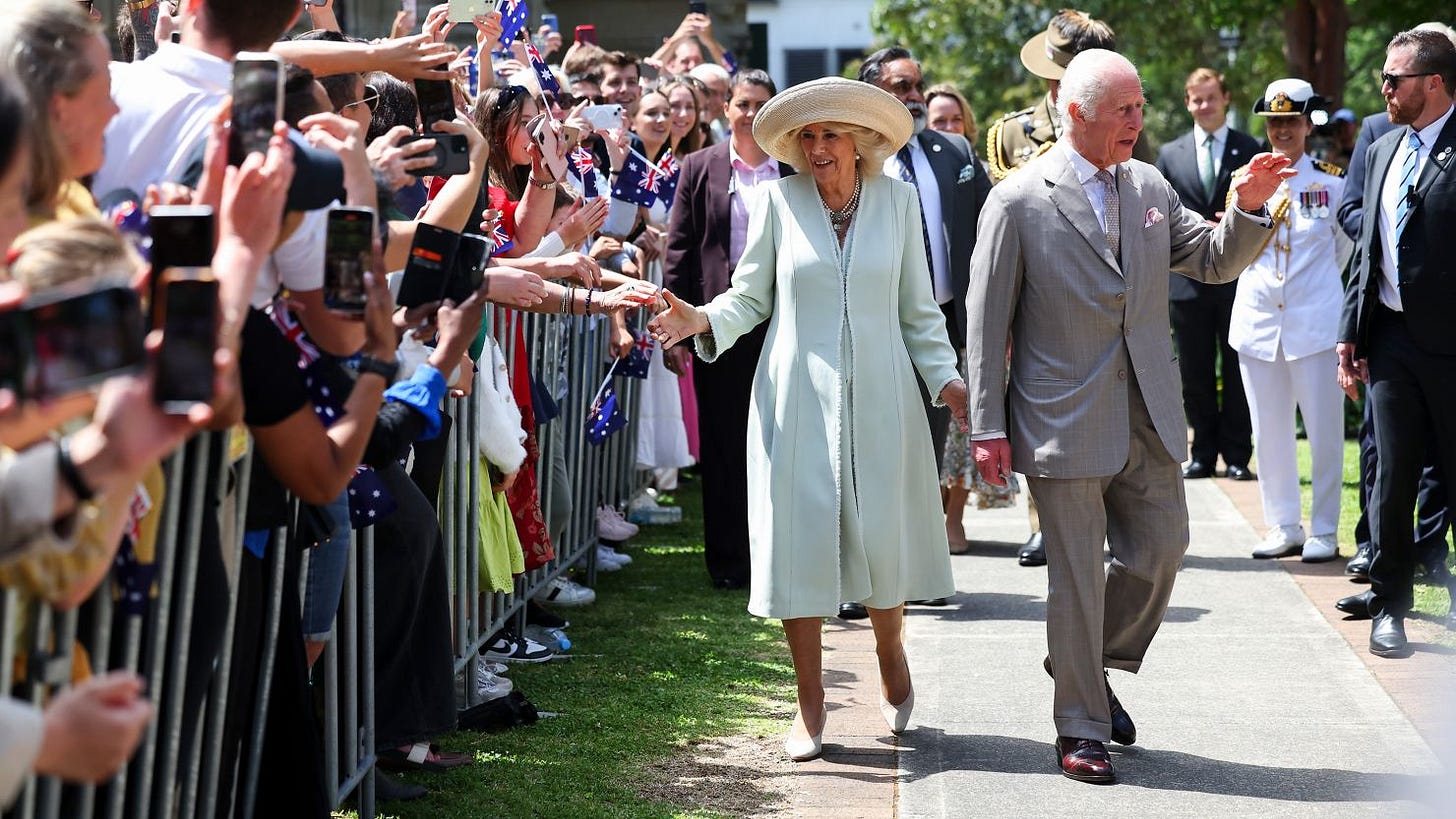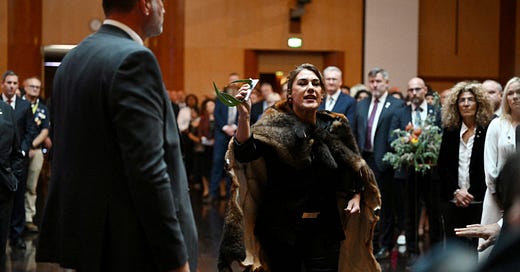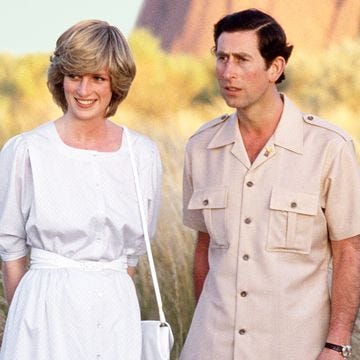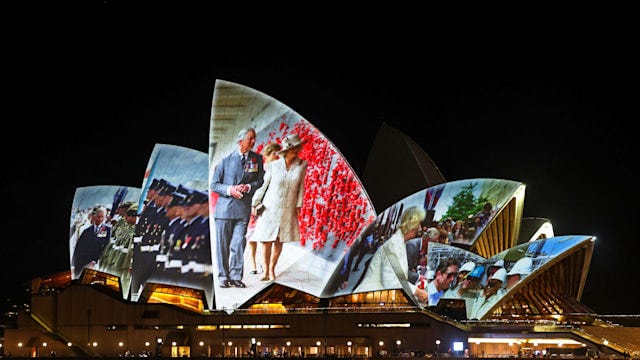On Monday morning, King Charles faced a vocal protest during his visit to Canberra’s Parliament House, as Indigenous activist and senator Lidia Thorpe interrupted the event with demands for the return of Indigenous land, shouting, “You are not my king.”
Thorpe, a fierce critic of colonialism and an advocate for the Blak Sovereign Movement, has long called for reparations and greater autonomy for Indigenous Australians. Thorpe’s protest highlights growing tensions around Australia’s relationship with the British monarchy, particularly concerning Indigenous rights. Her outburst on Monday came on the heels of the failed “Indigenous Voice to Parliament” referendum, which saw 60% of the population oppose the development of a body called the “Aboriginal and Torres Strait Islander Voice.” The Voice would have advised the Australian government on matters affecting Indigenous people in the region.
Thorpe’s protest refocused the spotlight on these unresolved issues as Charles and Queen Camilla continue their five-day visit to Australia—but to be clear, she is not the cause of them. This royal visit, which will also take the couple to Samoa, marks Charles and Camilla’s first major international tour since his ascension to the throne in 2022. The trip was meant to emphasize the royal family’s commitment to its Commonwealth ties (Charles remains head of state in Australia and 13 other realms), but incidents like today’s protest show that such tours are rarely without controversy.

Public reactions to royal visits can be unpredictable, ranging from renewed support for the monarchy to renewed criticism of its imperial legacy. There’s also been a resurgence, it seems, of republican sentiments since Charles and Camilla touched down in Sydney. Despite public support for the monarchy holding steady in Australia, younger generations continue to be more divided on the issue, with a near 50/50 split between monarchists and republicans.
Australians last decided in a referendum in 1999 to retain Queen Elizabeth II as head of state. I have to also note that that result is widely regarded as a consequence of disagreement about how a president should be chosen rather than majority support for a monarch. And the idea of a referendum continues to be brought to the table; it is the only method by which Australians could conceivably install a non-royal as their head of state.
In particular, the Australian Republic Movement, which campaigns for an Australian citizen to replace the British monarch as head of state, is hoping that this visit will rekindle thoughts of removing Charles as head of state. In the lead-up to the visit, the ARM launched what it calls a campaign to “Wave Goodbye to Royal Reign with Monarchy: The Farewell Oz Tour!” They’re even selling shirts.
From the Palace’s perspective, however, the main frustration in the wake of other royal visits seems to stem from their star players not being warmly received—or, worse, the spotlight falling on a “minor” figure rather than the intended star of the show. In the 1980s, for instance, Princess Diana famously outshone Prince Charles on their tours, much to the media’s delight (but to the dismay of the Firm).
In the lead-up to Charles’s current visit, memories of his past 16 trips to Australia were given pride of place through photos posted to the royal family’s social media feeds and projected onto the Sydney Opera House. Conspicuously absent from the slideshow? Any photos whatsoever of Diana, Princess of Wales. Yikes.
Similarly, in 2018, Meghan Markle received a wave of adoration during her and Prince Harry’s South Pacific tour, creating tension as she took the spotlight away from senior royals. The public's fascination with certain royals over others has often led to friction within the monarchy. And I daresay this is higher on the list of concerns for the Palace than a frank consideration of Indigenous or republican concerns.
All of this to say, not only does the tension between monarchy and public sentiment remain a central issue, but we see and feel it acutely when the royals visit former colonies. While Charles and Camilla’s visit to Australia and Samoa is no doubt intended to strengthen Commonwealth bonds, protests like Thorpe’s remind us that deep-seated issues, especially those tied to colonial history, can’t be glossed over with ceremonial appearances.
In past eras, it’s more than likely that critics of the monarchy were disinclined to loudly express their views because of the buffering sentiment attached to Queen Elizabeth II’s image. But Charles is now faced with these views without having the benefit of that curious veil of decency. His reign may well continue to face scrutiny on these matters as he attempts to balance tradition with the ever-evolving dynamics of the modern world. Whether the firm comes up with a better strategy for engaging with this fraught legacy of colonialism remains to be seen.








That's crazy, I had no idea that the king was head of state to Australia, let alone 13 other places! It just seems so archaic for that to be the case. I mean what does he even do? Do they take taxes from all these places? What services do they even offer? Just feels strange that a person from the other side of the glob has anything to do with a different country.